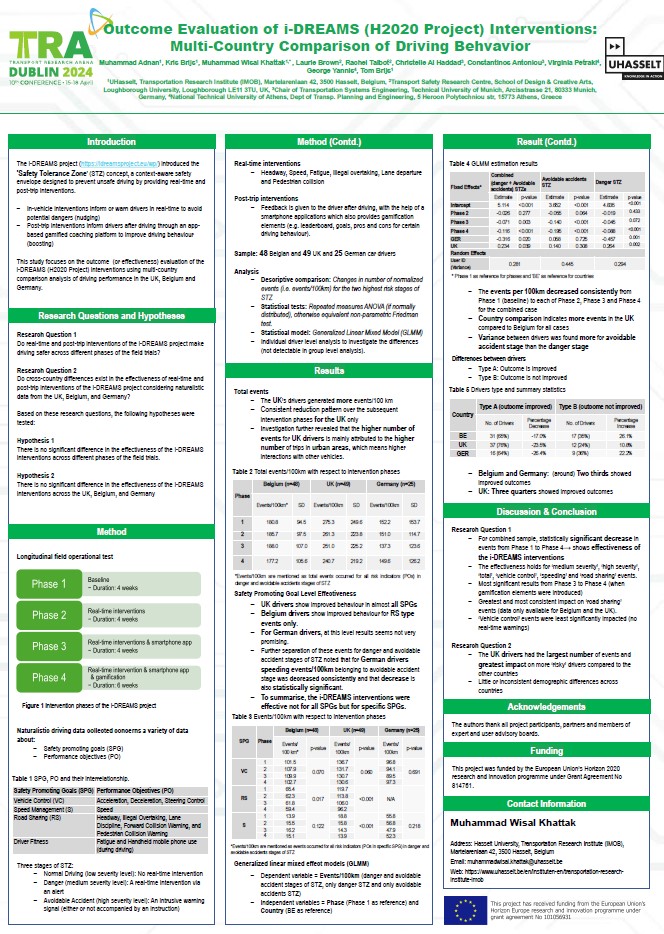
The i-DREAMS project introduced the concept of a ‘Safety Tolerance Zone’, i.e., a context-aware safety envelope designed to assist drivers in main-taining self-regulated control within the boundaries of safe operations. Using an ecosystem of sensors, i-DREAMS technology continuously monitors factors de-termining driving task complexity and available coping capacity and calculates risk levels in real-time. Based on this information, both real-time and post-trip interventions are tailored to keep drivers from getting too close to the boundaries of unsafe driving. Real-time interventions are provided via in-vehicle display, while post-trip interventions are delivered via a smartphone app (and web-dash-board) with provisions for gamification. This study focuses on effectiveness (i.e. outcome evaluation) of real-time and post-trip interventions that involves 4 phases including the base line measurement phase.
The paper presents a comparative analysis using the data collected (on-road field trails and questionnaire data) from Car-drivers from three countries: Bel-gium(n=48), UK(n=49) and Germany(n=25). Overall, car drivers showed a re-duction in events per 100km after exposure to the i-DREAMS technology. So, there was an improved safety outcome. However, differences were found be-tween the countries analysed. Highest number of events per 100km were noted for UK drivers with the reduction pattern consistent across 4 phases. Performance of interventions was found more promising for ‘road sharing’ type of events and ‘speeding’ events for Belgian and German drivers respectively. Driver level anal-ysis revealed that two-third of drivers in each country showed consistent decrease in events/100km.
| ID | pc534 |
| Presentation | |
| Full Text | |
| Tags |













